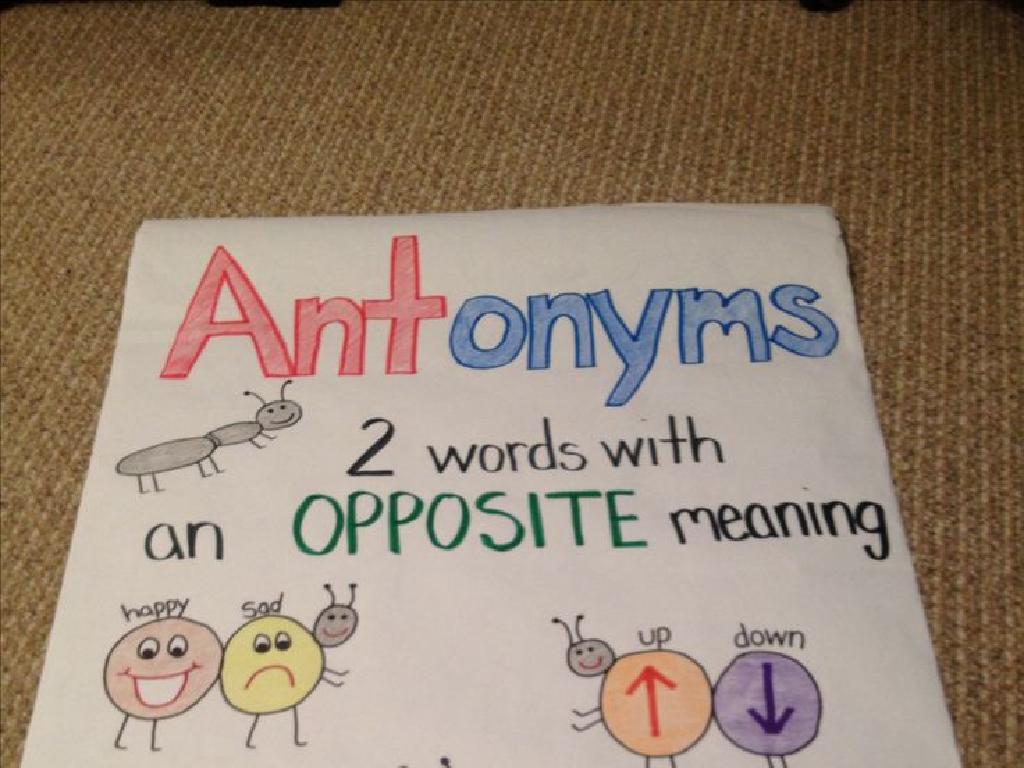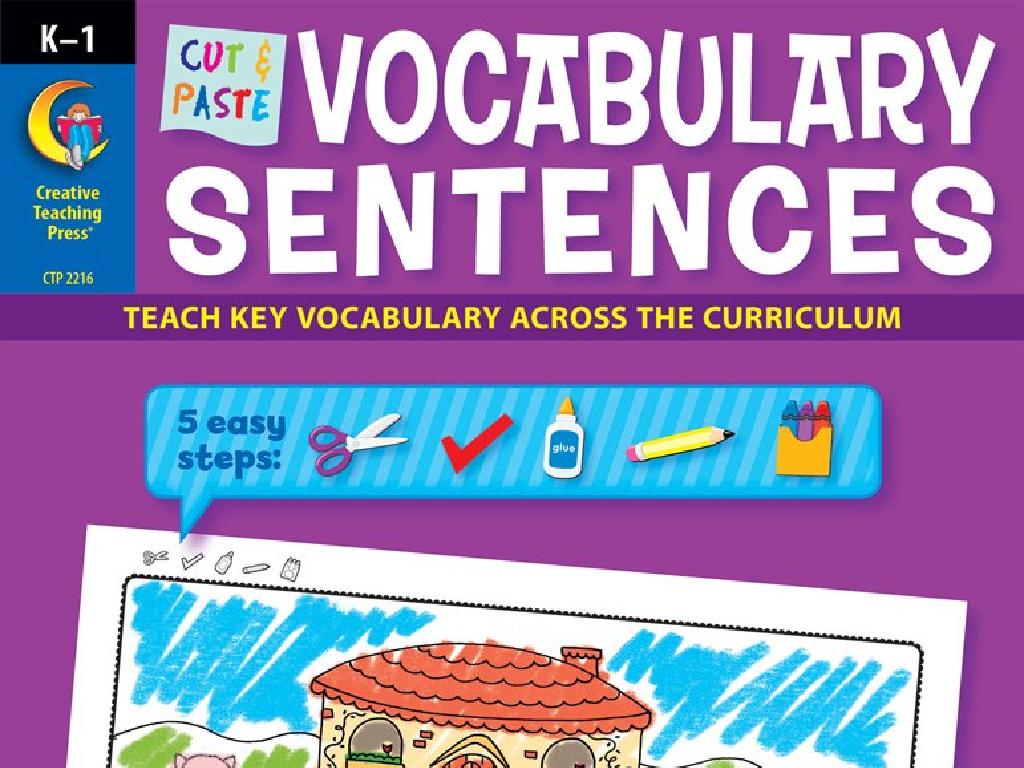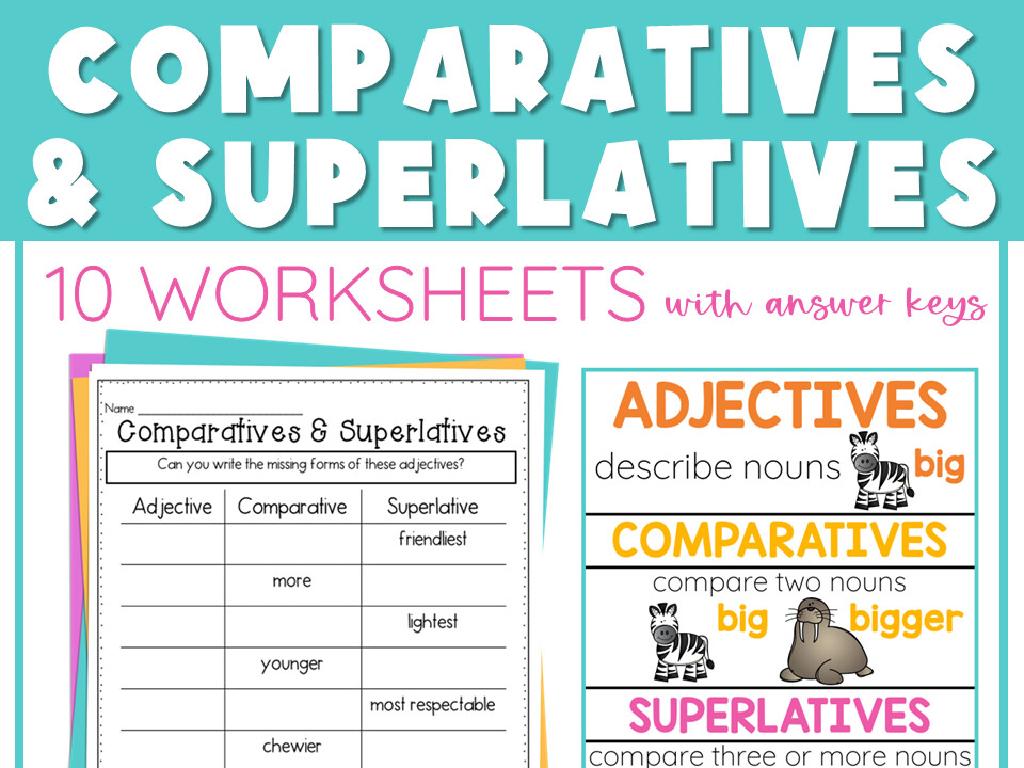Compare And Convert Metric Units Of Length
Subject: Math
Grade: Fourth grade
Topic: Metric Units Of Measurement
Please LOG IN to download the presentation. Access is available to registered users only.
View More Content
Welcome to Metric Measurements!
– Learn metric units of length
– Units like meters, centimeters, and millimeters
– How to compare and convert
– Use multiplication or division to convert units
– Why metric measurements matter
– Metric system is used worldwide in science and trade
– Practice with real examples
– Convert your height from centimeters to meters
|
This slide introduces students to the concept of metric units of length, such as meters, centimeters, and millimeters. Emphasize the importance of understanding these units for comparing and converting measurements, which is a skill used in everyday life, science, and international trade. Explain that the metric system is based on multiples of 10, making conversions straightforward. Provide examples, such as converting their own height from centimeters to meters, to make the lesson tangible and engaging. Encourage students to think of other examples where they might need to use metric measurements.
Understanding Metric Units of Length
– Metric units measure length
– Like centimeters (cm), meters (m), and kilometers (km)
– Used worldwide as a standard
– Meter (m) is the basic length unit
– Smaller lengths are in centimeters, larger in meters and kilometers
– Compare and convert metric lengths
– Practice with rulers and word problems to understand better
|
This slide introduces students to the concept of metric units, specifically focusing on units of length. Emphasize that the metric system is used around the world and is the standard system of measurement in most countries. Explain that the meter is the basic unit of length and that other units like centimeters and kilometers are based on the meter. Provide examples of each unit’s use in real life, such as a centimeter to measure a pencil’s length, a meter for a guitar’s length, and kilometers for the distance between two places. Encourage students to compare different lengths and practice converting between units using rulers for smaller measurements and word problems for larger scales.
Metric Units of Length
– Millimeter, Centimeter, Meter, Kilometer
– Millimeters in a Centimeter
– 10mm equals 1cm
– Centimeters in a Meter
– 100cm equals 1m
– Meters in a Kilometer
– 1,000m equals 1km
|
This slide introduces students to the common metric units of length, which are the millimeter, centimeter, meter, and kilometer. It’s crucial to help students understand that these units are part of a decimal system and are based on the number 10, making conversion straightforward. For instance, there are 10 millimeters in a centimeter, 100 centimeters in a meter, and 1,000 meters in a kilometer. Use real-life examples to help students visualize the differences in length units, such as comparing the thickness of a dime (about 1mm) to the width of a door frame (about 10cm), the length of a car (about 4m), and the distance of a local park from their home (possibly a few kilometers). Encourage students to bring rulers or measuring tapes to the next class to practice measuring objects in different units and converting between them.
Comparing Metric Units of Length
– Comparing 1 meter to 105 centimeters
– 1 meter is less than 105 centimeters
– Deciding lengths without converting
– Use a ruler or tape measure to compare
– Using everyday objects to visualize
– A meterstick vs. a long notebook
– Understanding meter & centimeter
– Meter is the basic unit, centimeter is 1/100 of a meter
|
This slide is aimed at helping students understand the concept of comparing different metric units of length. Start by posing the question of which is longer, 1 meter or 105 centimeters, to spark curiosity. Explain that sometimes we can use what we know about the size of units to compare lengths without converting. For example, since 100 centimeters equal 1 meter, 105 centimeters is longer by 5 centimeters. Encourage students to visualize lengths by comparing them to objects they are familiar with, such as a meterstick or a notebook. Reinforce the concept that a meter is the basic unit of length in the metric system, and a centimeter is one-hundredth of a meter. This understanding is crucial for them to be able to compare and convert metric units effectively.
Converting Metric Units of Length
– Steps to convert units
– To change units, multiply or divide by powers of 10
– Use multiplication for larger units
– Multiply when going from smaller to larger units, like cm to m
– Use division for smaller units
– Divide when going from larger to smaller units, like m to cm
– Practice with examples
– Let’s convert 250 cm to meters and 3 meters to millimeters together!
|
This slide is aimed at teaching fourth graders how to convert between different metric units of length. Start by explaining that the metric system is based on powers of 10, which makes conversion straightforward. When converting to a larger unit, they will multiply by factors of 10. Conversely, when converting to a smaller unit, they will divide. Provide clear examples, such as converting centimeters to meters and meters to millimeters, to illustrate these concepts. Encourage the students to participate by trying the examples provided together as a class. This interactive approach helps solidify their understanding of metric conversions.
Conversion Practice: Metric Units of Length
– Convert 1000 mm to meters
– 1000 mm is equal to 1 meter (1000 mm / 1000 = 1 m)
– Centimeters in 3 meters?
– 3 meters is 300 centimeters (3 m x 100 = 300 cm)
– Millimeters in 5 kilometers?
– 5 kilometers is 5,000,000 millimeters (5 km x 1000 x 1000 = 5,000,000 mm)
– Understanding conversion
|
This slide is aimed at helping students practice converting between different metric units of length. Start by explaining that the metric system is based on multiples of ten, making conversion straightforward. For example, there are 1000 millimeters in a meter, so to convert millimeters to meters, you divide by 1000. Conversely, to find out how many centimeters are in 3 meters, you multiply by 100 since there are 100 centimeters in a meter. The challenge question encourages students to apply their knowledge to a larger scale by converting kilometers to millimeters. Provide additional practice problems and encourage students to explain their reasoning process to reinforce their understanding.
Real-Life Applications of Metric Measurements
– Importance of metric conversion
Understanding conversions helps in cooking, science, and travel.
– Everyday use of metric units
Measuring lengths for DIY projects, buying fabric, or tracking weather.
– Partner discussion on metric use
Talk with a classmate about times you’ve used centimeters or meters.
– Sharing personal experiences
|
This slide aims to help students understand the practical importance of knowing how to convert metric units of length. Discuss why it’s essential for various activities like cooking, where recipes may require converting grams to kilograms, or in science experiments, where precise measurements are crucial. Provide relatable examples such as measuring materials for a craft or understanding distances when traveling. Encourage students to engage with a partner to discuss and share their own experiences with metric measurements, fostering a connection between classroom learning and real-world application. This activity will help solidify their understanding and recall of metric units in a meaningful context.
Class Activity: Measurement Scavenger Hunt
– Find and measure classroom objects
– Record lengths in metric units
– Use centimeters (cm) and meters (m) for recording
– Share measurements with the class
– Understand metric unit conversion
– Learn to convert between cm and m
|
This interactive activity encourages students to explore the classroom and find various objects to measure, helping them understand and apply metric units of length. Provide students with rulers or tape measures marked in centimeters and meters. They should record the length of each object in both units, practicing their conversion skills. After the hunt, students will present their findings, discussing the different lengths and units used. As a teacher, prepare to guide them through the conversion process and ensure they grasp the relationship between centimeters and meters. Possible variations of the activity could include measuring the same object with different units, comparing objects by size, or estimating lengths before measuring.
Conclusion: Mastering Metric Measurements
– Recap: Metric units & conversions
– Importance of accurate measurement
Accurate measurements are crucial in daily life, cooking, and science.
– Review key points
Let’s go over what we’ve learned about meters, centimeters, and millimeters.
– Open floor for questions
|
As we wrap up today’s lesson, let’s revisit the metric units of length including meters (m), centimeters (cm), and millimeters (mm), and how to convert between them. Emphasize the importance of measuring accurately in various aspects of life, such as following a recipe or determining the right dose of medicine. Review the key points of today’s lesson, ensuring that the students understand the conversion methods. Finally, encourage the students to ask any questions they might have about the lesson to clarify their understanding. This is also a good time to assess if the objectives of the lesson have been met and to address any lingering confusion.






